Twenty One Pilots Dont Do That Again
Some planes in the sky leave trails that persist and spread, and other planes, in the same heaven, leave short-lived trails, or no trails at all.
These trails are actually called contrails, short for "condensation trails".They are not smoke from the engines, they are formed when the water in jet engine exhaust (and there'south quite a lot of it, like car frazzle on a cold day) mixes with wet cold air and condenses and freezes into ice crystals. Contrails are really a type of cirrus cloud. When the air is moisture and cold plenty the trails can stay around for a long fourth dimension, and sometimes spread out.
This divergence betwixt trails that fade abroad, and trails that spread, is often used as evidence of the "chemtrail" theory, which states that the longer lasting trails (or some of them) are being deliberately manipulated for some reason. So you lot encounter helpful images like this.
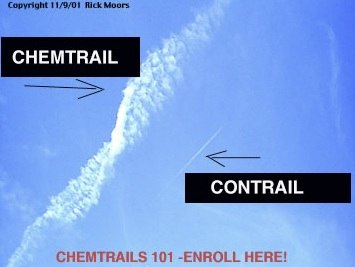
But this is wrong. Contrails can fade away, and contrails can persist and spread. It depends on the air they are formed in.
Now there are ii main reasons why some planes go out trails and some nearby planes do not. The less common reason is that different planes have dissimilar engines. Some engines will leave a contrail in the air where another engine will non. Here, for example, are an Airbus A340 (maiden flight: 1991) on the left, leaving contrails, and a Boeing 707 (maiden flying: 1957) non leaving contrails. Both are flying at 33,000 feet (part of a High german test to report contrail formation), only the frazzle of the newer engines of the A340 is at a lower temperature, so makes contrails in a wider range of conditions*.
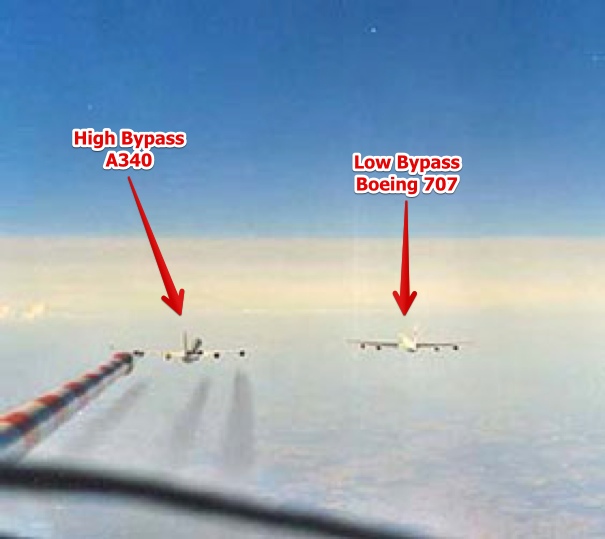
Y'all can also get a similar consequence with engines at different power settings, especially if it affects the exhaust temperature. This can occasionally be seen with loftier distance refueling, when the plane being refueled cuts the throttle to nearly idle in club to split up from the tanker.
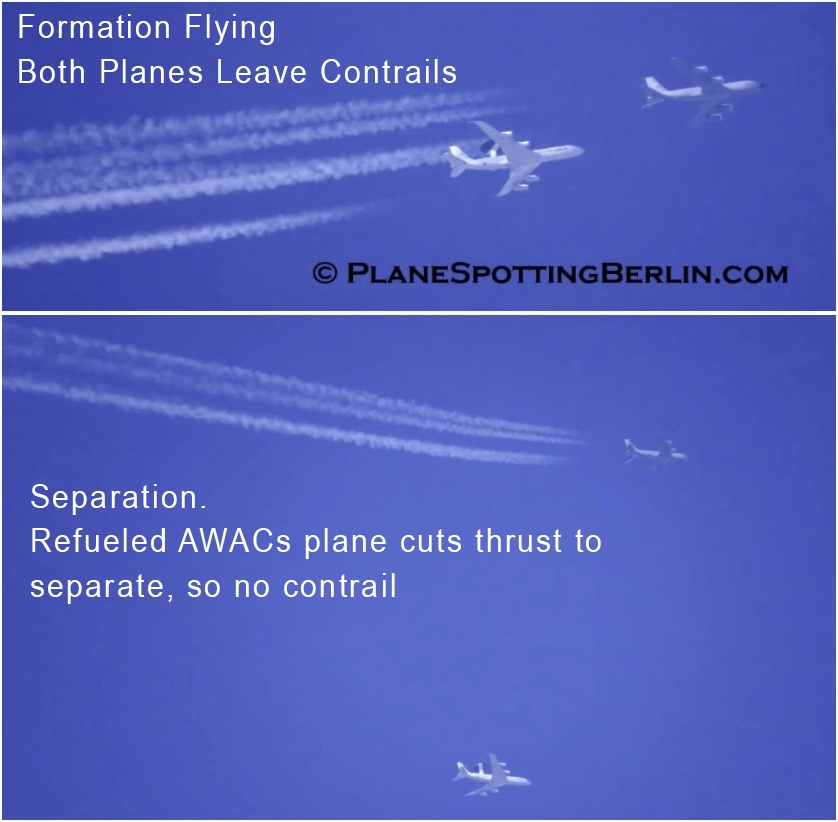
Contrails in a refueling situation turn on/off
But here's the chief reason why you lot see trails on some planes but not on others, and I'll emphasize it, considering although it's simple, it'due south too easy to miss.
The planes are at different altitudes.
Yes, it's really that unproblematic. The reason that one plane makes contrails or makes contrails that persist, and the other plane does not, is that they are in different regions of the air. For simplicity, let'southward refer to these regions of air as wet air and dry air, although the differences are a bit more circuitous.
When the plane is in wet air, it makes a contrail. In dry out air, information technology does non.
Surely, you might object, they would have to exist miles apart? Well, no, and that brings me to some other point I fear I must emphasize:
Wet and dry air tin can exist within a few anxiety of each other.
Consider, for example, clouds:
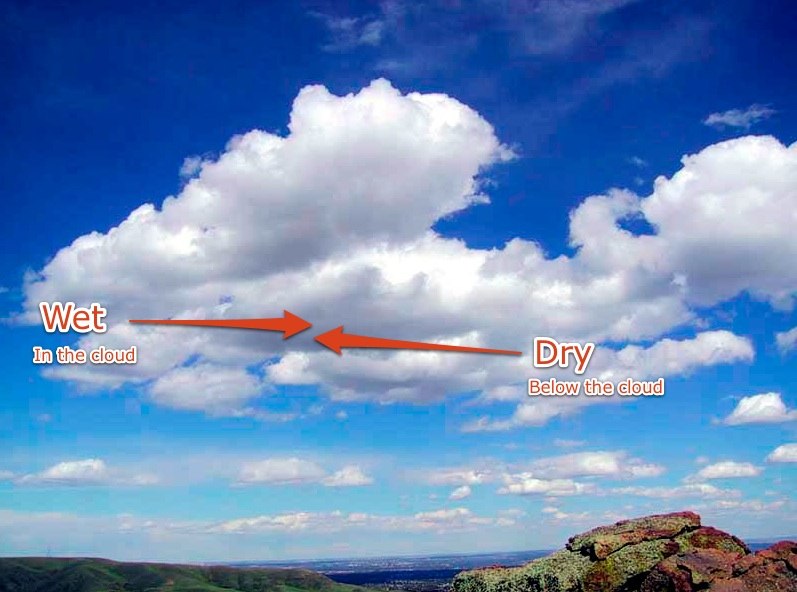
Inside the deject it'due south wet. Outside it's dry. What's the difference between within and outside? It's a few feet.
Look at the lesser of those clouds, see them extend off into the distance. They form a layer at a specific altitude. Above that altitude there are clouds. Below it there are no clouds. The divergence between clouds and no clouds is just a few feet.
Now those are depression altitude cumulus clouds. Let's look at high distance clouds.
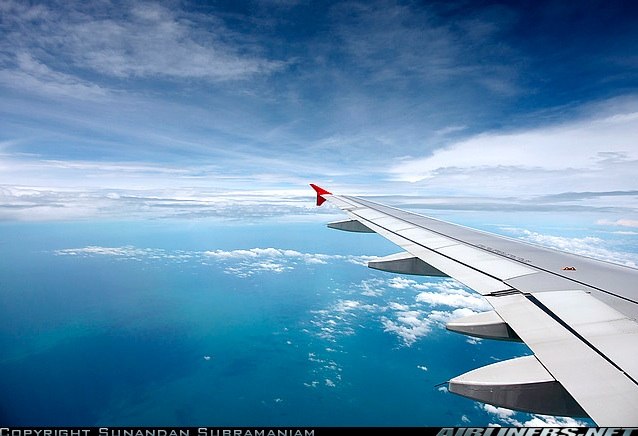
Once again they are in a flat layer. The difference between being in the layer and not in the layer is just a few feet.
This layering of the air into wet and dry layers is not limited to clouds. Seemingly clear air too contains exactly the same kind of variation in layers. This was very neatly illustrated by the recent launch of the Solar Dynamics Observatory. As information technology ascended it did not leave a contrail, until information technology hit a layer of wet air, when it left a contrail that lasted quite a while, and so it went into dry out air again, and no more contrail

Then, if a plane were flying in that middle region and then it would probably exit a persisting contrail. If information technology were above or below it and then it would not.
Only, you lot may cry, the planes are at the aforementioned distance. Now y'all might fifty-fifty disagree with a "few feet", and say the planes were besides shut for them to be in different layers. I'd respond with:
You tin't tell how high a airplane is
And yous certainly can't tell if 1 aeroplane is at the same altitude as another. These planes fly at thirty,000 to 40,000 feet. Allow'southward see what the visual difference is at around that altitude:

I took one image of a jet nominally at 35,000 feet. So scaled it for 34,000 (102.9%) and 32,000 feet (109.4%). I think you'll agree they all wait pretty much the aforementioned. Peculiarly as this is more zoomed in than yous'd see with the naked eye, which would exist more than like:
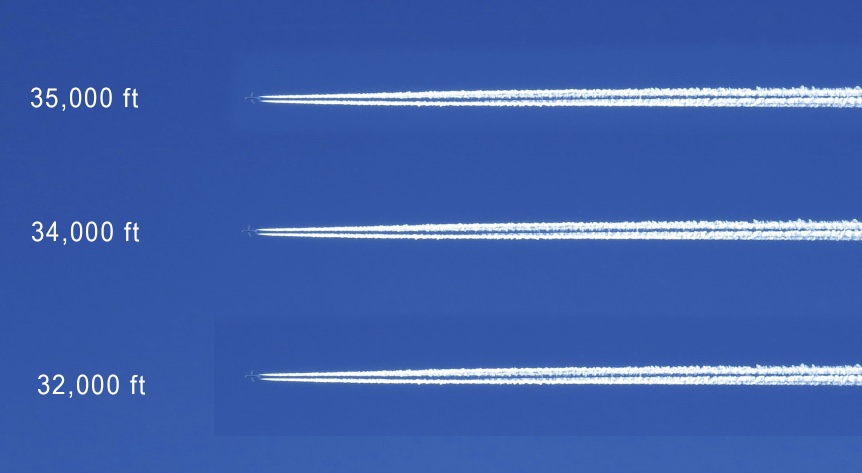
If the planes are flying lower, and then it'south notwithstanding similar. If the top plane was flying at 20,000 feet, then the lesser would be at 18,285 feet, withal most two,000 feet autonomously, and looking pretty much the same to the naked eye.
And that is with the same model of plane, directly overhead, and right next to each other. A state of affairs that almost never occurs. If the planes are dissimilar, or separated, or at an bending to you, and then it is IMPOSSIBLE for you to tell the relative altitudes when they are high in the sky. Just expect at this: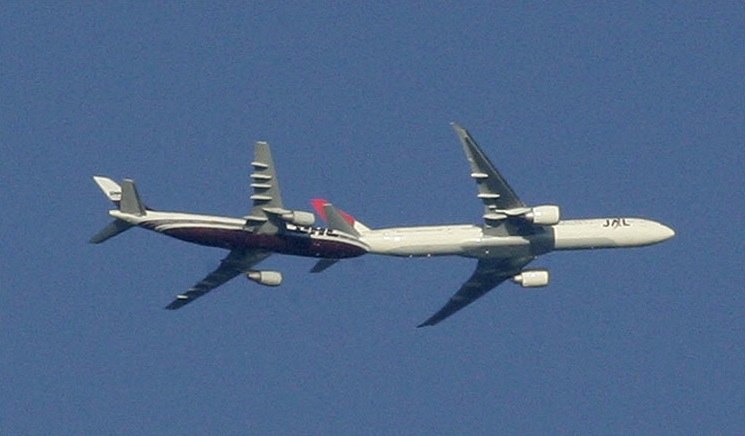
Or from the ground, with the planes at 30,000 anxiety.
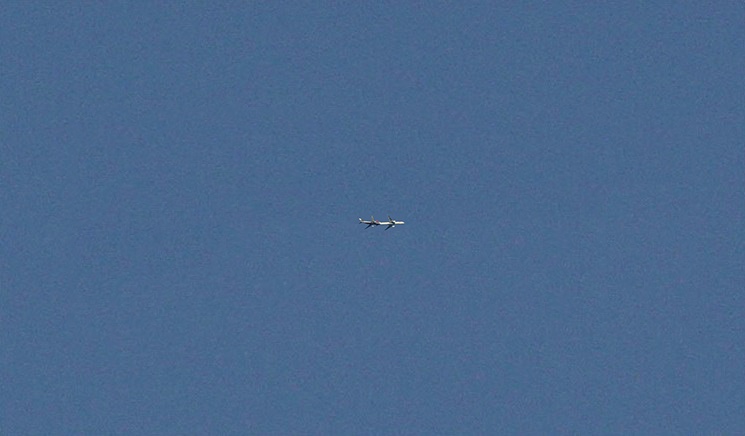
They look nigh the same height, right? In fact, if they were not overlapping, yous'd think the JAL plane was lower, as it seems bigger, hence closer. Only actually, the JAL plane (a B777) is at least 1000 feet in a higher place the DHL airplane (an A300).
And look at some planes on the ground, where we know they are all the same distance from the camera. The differences in size are very meaning:
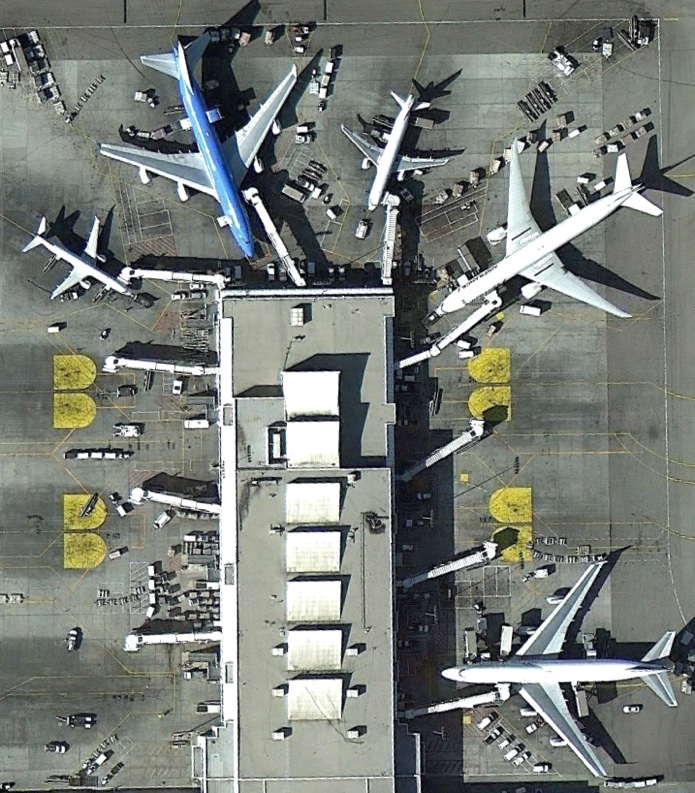
Then, a simple question gets a uncomplicated answer:
The planes leave dissimilar trails because the planes are at different altitudes.
Meet Too:
https://contrailscience.com/broken-contrails/ – Why contrails are often broken and showtime and end abruptly.
Debunked: High Bypass Turbofans do not make Contrails [actually they make more than] – A more than detailed look at why modern engines brand contrails in a wider range of conditions.
*(Edited three/15/2015): when I wrote this commodity in 2010 I'd said that the newer more efficient engines produced "more water", and while it'due south true that the cleaner the combustion the more h2o is produced, the difference is negligible for the two engine types discussed. The cardinal difference is the exhaust gas temperature, equally explained in the more recent Metabunk article
Source: https://contrailscience.com/why-do-some-planes-leave-long-trails-but-others-dont/
0 Response to "Twenty One Pilots Dont Do That Again"
Post a Comment